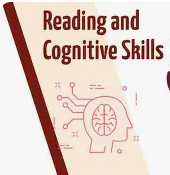Retirement marks a profound transition—a shift from structured work life to a more open-ended existence. For many, it’s a time to travel, reconnect with loved ones, or finally pursue long-delayed passions. But beneath the surface of this newfound freedom lies a critical challenge: maintaining cognitive health. As the scaffolding of daily work routines fades, so too can the mental stimulation that kept our minds sharp. The key to thriving in retirement isn’t just financial security—it’s savoring and sustaining cognitive vitality.

“Retirement is a blank sheet of paper. It is a chance to redesign your life into something new and different.” Unknown
Isolation is a silent threat to cognitive health. Regular social interaction reduces stress and depression—both of which are linked to memory loss. Whether it’s joining a book club, volunteering, or simply dining with friends, staying socially active is essential. These interactions stimulate emotional and cognitive processing, helping the brain stay resilient and engaged.

“There is a difference between solitude and isolation. One is connected and one isn’t. Solitude replenishes, isolation diminishes.” — Henry Cloud
Sustaining cognitive vitality means maintaining strong, active mental abilities—like memory, reasoning, and learning—throughout life, especially as we age. It’s not just about avoiding cognitive decline; it’s about thriving mentally and staying sharp, engaged, and adaptable.
Key components of cognitive vitality include cognitive reserve, the brain’s ability to improvise and find alternate ways of doing things, often built through education, complex work, and lifelong learning. Neuroprotection refers to strategies that help shield the brain from injury or degeneration, such as adopting a healthy lifestyle and managing chronic conditions. Mental agility is the capacity to think clearly, solve problems, and adapt to new challenges, even in later years.

“For me, the glory of the human animal is cognitive activity.” — Unknown
Sustaining it involves continuous learning: acquiring new skills, hobbies, or languages keeps the brain stimulated. Physical activity: Regular exercise boosts blood flow to the brain and supports neuroplasticity. Consider nutrition; foods rich in omega-3s, antioxidants, and vitamins (like leafy greens and berries) help protect brain cells. Social engagement is made up of meaningful interactions that support emotional and cognitive health. Lastly, sleep and stress management are both crucial for memory consolidation and mental clarity.
Designing a cognitive lifestyle is imperative. Savoring cognitive health in retirement isn’t about rigid routines—it’s about crafting a lifestyle that nourishes the mind. In essence, sustaining cognitive vitality is about nurturing your brain like you would your body—keeping it active, nourished, and resilient.

“Reading develops cognitive skills. It trains our minds to think critically and to question what we are told.” — Karin Slaughter
Retirement is not the end of mental growth—it’s the beginning of a new kind. By embracing curiosity, connection, and wellness, retirees can savor their cognitive health and live with vibrancy and clarity. The brain, like any muscle, thrives on use. So let retirement be a time not of decline, but of deliberate mental flourishing.
Interested in reviewing other articles? Go to savorretirement.com





